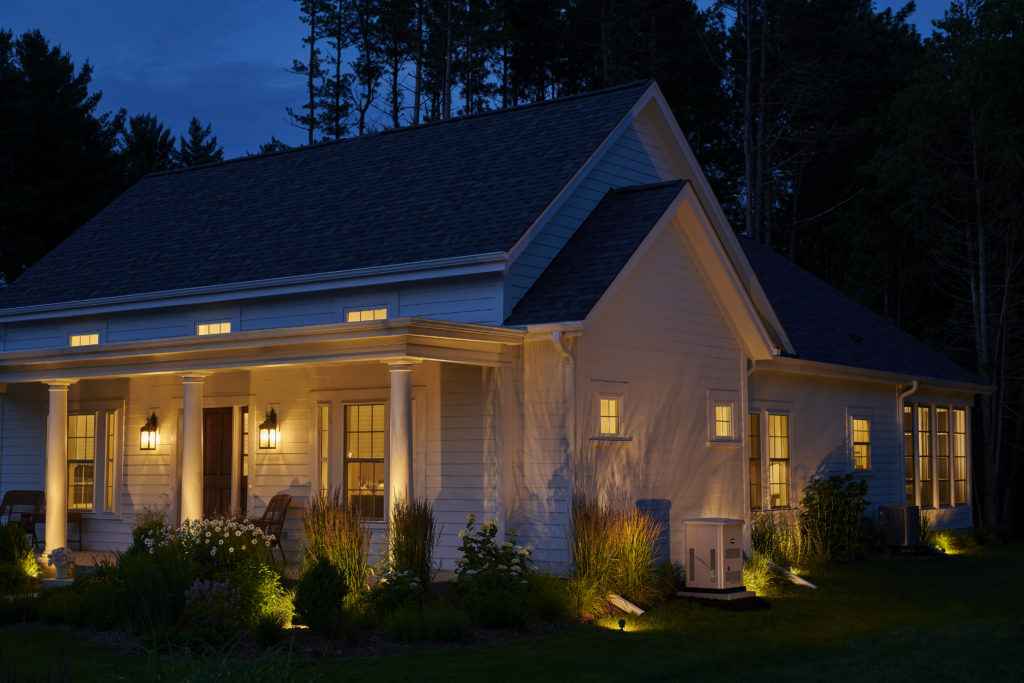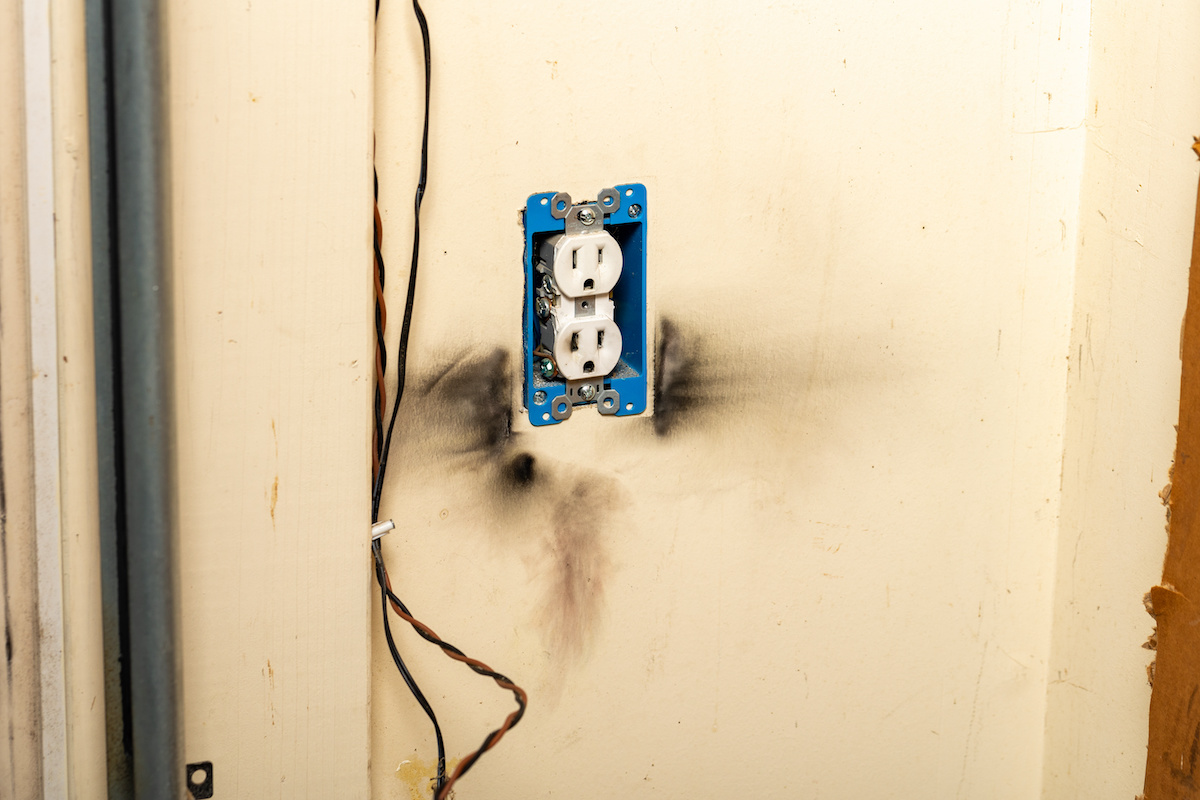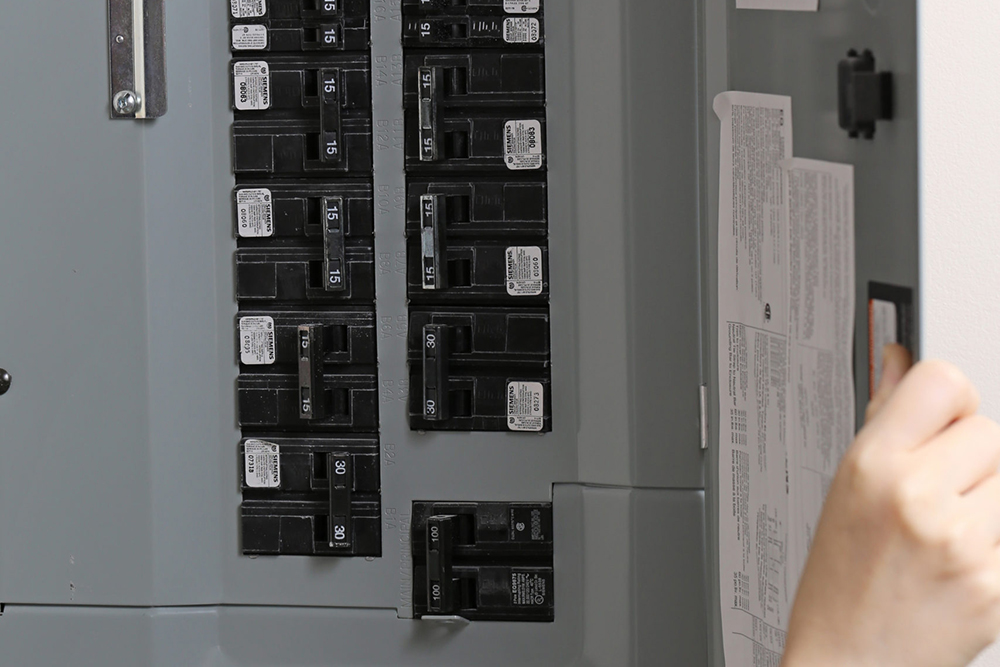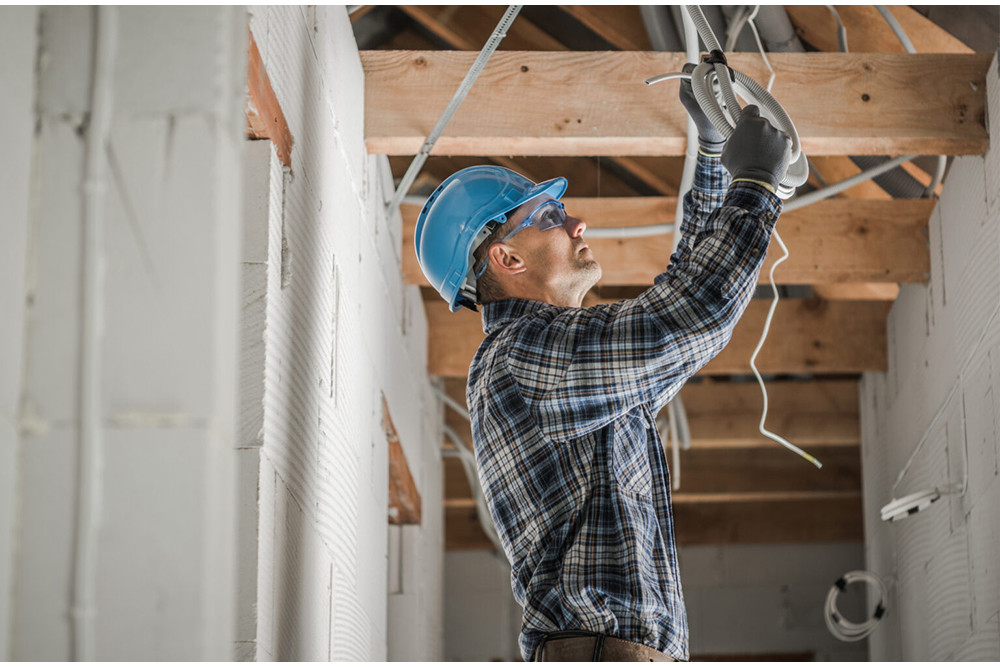Modern homes are filled with electronics that depend on steady, clean power. From smart thermostats and refrigerators to charging stations and entertainment systems, nearly every room in a house now includes sensitive microelectronics that can be damaged by even a brief voltage spike. That’s where whole home surge protectors come in. Installed at the electrical service panel, these devices act as a defense barrier between your home’s electrical system and unpredictable power surges.
Understanding what these systems do and why they are increasingly essential is the first step toward protecting your home’s comfort, safety, and investment.
What a Whole Home Surge Protector Actually Does
A surge protector is more than a convenience device. It is a safety system designed to intercept sudden bursts of high voltage before they can travel through your home’s wiring. These bursts can come from lightning, utility switching, or your own appliances. Each time an air conditioner, refrigerator, or well pump motor turns on or off, it sends a small jolt back through the line. Over time, those small internal surges wear down circuit boards and shorten the lifespan of expensive equipment.
Whole home surge protectors, officially called Surge Protective Devices (SPDs), are installed near the main electrical panel. They monitor voltage continuously and divert excess energy safely into the ground before it reaches outlets or connected devices.
The key difference between this and a plug-in strip is scope. While a strip might protect a single TV or computer, a service-level SPD protects the entire home by intercepting voltage spikes before they spread across circuits.
Where Power Surges Come From
There is a common misconception that lightning is the only serious cause of power surges. Lightning certainly poses a threat, but it is far from the only source.
In the Houston and Dallas regions, where summer storms are frequent, lightning strikes are a well-known risk. However, other causes are just as common and often more destructive over time.
- Utility grid switching can create sudden voltage fluctuations when transformers or large electrical loads engage or disconnect.
- Internal surges originate inside the home when appliances with motors cycle on and off. The National Institute of Standards and Technology has found that these internal surges are the most common kind experienced by homeowners.
- Downed lines or temporary faults on the power grid can send high transient voltages into nearby homes.
Even without a visible lightning strike, small voltage spikes can degrade equipment over time. Each surge weakens insulation, stresses components, and reduces the lifespan of electronics.

Layers of Protection Matter
Whole home surge protectors work best as part of a layered protection system. The National Electrical Code (NEC) and the Institute of Electrical and Electronics Engineers (IEEE) both recommend a multi-stage approach to controlling surges.
The first layer is a Type 1 or Type 2 SPD installed at the service panel. This stops large surges at the entry point. For added security, Type 3 protectors, such as plug-in devices or power strips, can be used at outlets where particularly sensitive equipment is connected.
This layered design ensures that even if one device reduces but does not stop a large surge, the next layer will absorb the remaining energy safely.
Why Whole Home Surge Protection Is Now a Code Requirement
Electrical codes evolve based on observed risks and technology changes. Since the 2020 update, NEC Article 230.67 has required every new or replaced residential service to include a Type 1 or Type 2 surge protective device. The 2023 edition added that these devices must have a minimum nominal discharge current rating of 10 kA, which measures how much energy they can redirect safely.
This addition reflects years of data showing how surges cause costly damage to modern electronics and household systems. The NEC now treats surge protection as a standard element of safety, similar to grounding or smoke detection.
For homeowners, meeting this code requirement provides peace of mind. Fewer repair calls, longer equipment life, and fewer insurance claims are practical benefits that come from a properly installed surge protector.
The Financial and Practical Benefits
Surge protection provides both short-term and long-term financial value. Although installation costs vary depending on the home, most units cost less than replacing even one major appliance.
Protecting Modern Appliances and Systems
A single air conditioning system can cost several thousand dollars to replace. Add to that the refrigerator, washer, dryer, range, and connected devices, and the total investment in electronics within a home can exceed $20,000. Each one of these items contains circuit boards that are sensitive to voltage spikes. A strong surge could destroy them instantly.
Installing a whole home SPD reduces that risk dramatically by clamping excess voltage to a safe level before it reaches those systems.
Reducing Insurance Claims
Lightning and surge-related insurance claims total more than a billion dollars each year across the United States. Texas often ranks near the top in claim frequency and average payout. Even when insurance covers the loss, the inconvenience, downtime, and deductibles are costly. Preventing the damage in the first place avoids that entire process.
Extending Equipment Lifespan
Even the smallest surge adds microscopic wear to electronics. Over months and years, this silent damage adds up. A surge protector allows electronics to operate within their intended design limits, preserving lifespan and reliability.
The Technical Side of Performance
When comparing surge protectors, certain specifications determine their performance and reliability.
- UL 1449 Listing: This certification confirms that the device has been tested under standard surge conditions and performs safely.
- Voltage Protection Rating (VPR): This number shows how much voltage passes through before the device clamps it down. Lower numbers mean better protection.
- Nominal Discharge Current (In): Residential SPDs must handle at least 10,000 amps of surge current to meet NEC standards.
- Short Circuit Current Rating (SCCR): Ensures the SPD can withstand the maximum available fault current in the electrical system without failure.
Why Houston and Dallas Homes Benefit the Most
Texas experiences more lightning events than nearly any other state, and both Houston and Dallas are at the center of that activity. In addition to storms, both cities experience extreme summer heat that puts heavy demand on the electrical grid. Load transfers and brownouts create abrupt voltage changes that can cause internal surges.
At the same time, modern homes in these cities are increasingly powered by smart thermostats, connected appliances, home automation systems, and electric vehicle chargers. Each new device adds sensitivity to voltage fluctuations. A properly installed surge protector is one of the most effective ways to shield these systems from damage and maintain stable operation.
Installation and Professional Considerations
The effectiveness of a surge protector depends heavily on installation quality. Improper wiring can reduce its performance by increasing the distance electricity must travel to reach the ground.
Licensed electricians install SPDs as close to the main service panel as possible, keeping the connecting wires short and straight. This reduces resistance and improves the protector’s ability to redirect surge energy safely.
A poorly installed unit might meet basic inspection requirements but still fail to protect equipment effectively.
Integrating Surge Protection with Generators and Automation Systems
Many Texas homeowners now have whole home standby generators to maintain power during storms and outages. These systems can create their own small surges during startup or when loads transfer through an automatic transfer switch (ATS).
The best protection strategy includes SPDs installed at multiple points: the service panel, the generator output, and the transfer switch. The same logic applies to homes with solar panels or advanced building automation systems. Each connection between systems creates potential for transient voltage, and each can be protected.

Ongoing Maintenance and Longevity
Surge protectors operate silently, but they do wear over time. Each time an SPD absorbs a surge, its internal metal oxide varistors (MOVs) degrade slightly. Higher-quality models include indicator lights or monitors that show when the unit is still active or needs replacement.
Checking this indicator during routine maintenance or generator service ensures continued protection. Replacing a surge protector is quick when installed correctly, often requiring only a few minutes without power.
Myths About Surge Protection
Several myths continue to confuse homeowners about surge protection.
- Some believe that power strips provide full protection. In reality, plug-in devices only guard the specific equipment plugged into them and have a much lower surge capacity.
- Others think protection only matters if lightning strikes close by. In fact, most damaging surges come from inside the home or through the utility system.
- Another misconception is that surge protectors prevent power outages. They do not supply power; they only manage overvoltage.
Understanding these facts helps homeowners set accurate expectations and pair surge protection with other backup systems when needed.
Safety and Peace of Mind
Electrical safety involves more than keeping lights on. It includes preserving the integrity of everything powered within the home. A whole home surge protector provides assurance that when the weather turns rough or the grid becomes unstable, your systems are protected from harm.
In Texas, where thunderstorms and power fluctuations are common, this protection is essential. Installing a surge protector means that the next time lightning flashes or power flickers, you can relax knowing your home’s electrical systems are safe.
The Brotherlylove Difference
Brotherlylove Electric has provided expert electrical service to homeowners across Houston and Dallas for more than a decade. Our team is licensed, insured, and trained in the latest NEC standards to ensure every installation meets code and delivers dependable performance.
Before installation, we evaluate your panel, grounding system, and total electrical load to select the right device for your home. Whether your goal is to safeguard smart home equipment, protect major appliances, or enhance a generator system, our electricians design and install surge protection that lasts.
For reliable service and peace of mind, contact Brotherlylove Electric today for professional installation throughout the Houston and Dallas-Fort Worth areas.





